
Safety & Security
We know that on-campus safety is critical. We want you to know that we have things in place to ensure your child is safe.
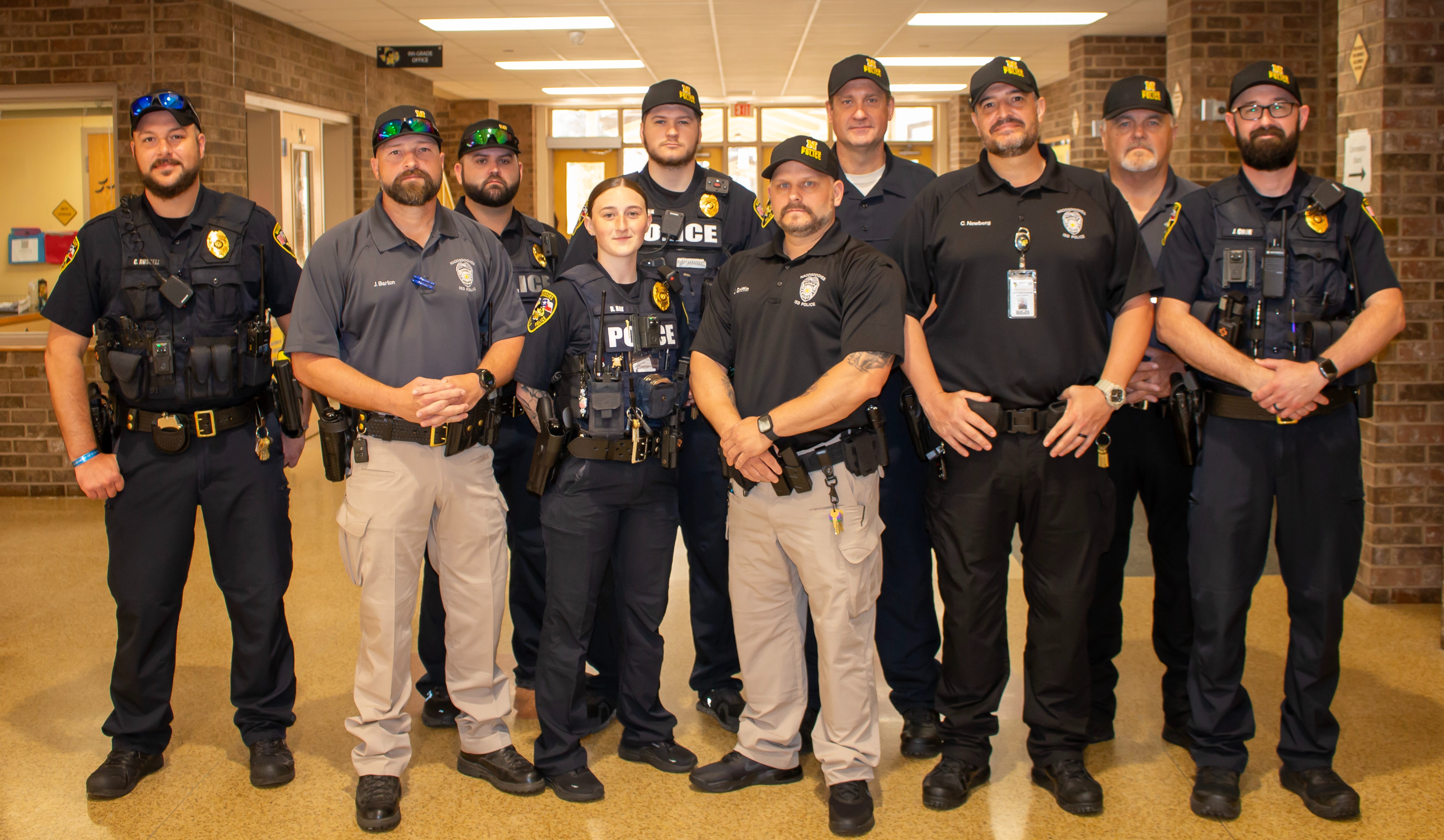
General Information
The safety and security of students, staff, and visitors in the Nacogdoches Independent School District is paramount. NISD strives to ensure a safe environment for employees to work and students to concentrate on learning, developing, and achieving academic excellence.
NISD administrators are currently trained in National Incident Management System (NIMS) and Incident Command System (ICS) emergency management methodologies, the Standard Response Protocol (SRP), and The Standard Reunification Method (SRM). NISD utilizes these and other best practices to create and maintain a safe environment, including coordination with local, state and federal authorities and other safety specialists to continually update procedures and guidelines.
The district utilizes a model that includes four phases of emergency management: Mitigation/Prevention, Preparedness, Response, and Recovery.
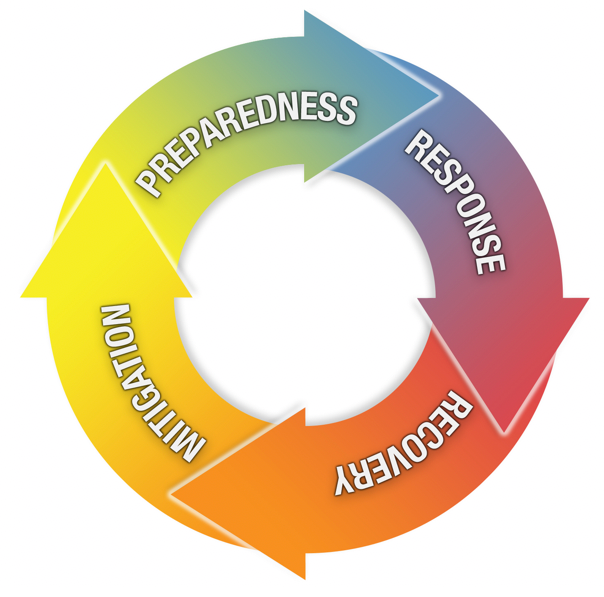
Mitigation / Prevention
Creating and maintaining a culture of mutual respect and understanding at each campus. The more a campus embraces such a culture, the more likely an intervention will prevent a situation from escalating to an emergency level
Daily check-in and monitoring of individuals entering and exiting campuses
Ensuring district safety and security policies reflect current best practices and trends
Providing violence prevention curriculum to all campuses
Conducting staff development training pertaining to safety and
safety audits of district facilities
Identification of at risk-students by teacher referrals at the elementary level and by student or teacher referrals at the secondary level
Full-day presence of School Police Officers at every campus
Assist school administrator with Student Threat Assessments, as needed
Anonymous Alerts (STOPit App)
Preparedness
Develop and implement emergency plans and procedures tailored to the unique needs of the schools.
Conduct regular drills and exercises to train students, staff, and first responders on how to respond to different types of emergencies.
Establish communication systems and protocols for alerting and notifying stakeholders during emergencies.
Maintain updated contact information for students, staff, parents, and emergency contacts.
Secure necessary resources, such as emergency supplies, equipment, and facilities.
Response
Activate the emergency response plan when an incident occurs, whether it's a natural disaster, a security threat, a health crisis, or any other emergency.
Ensure the safety and well-being of students and staff by providing immediate medical care, evacuation if necessary, and shelter.
Coordinate with local emergency services, such as police, fire, and medical personnel, to respond effectively to the situation.
Communicate with parents and guardians to keep them informed about the situation and the status of their children.
Recovery
Assess the impact of the emergency and begin the process of recovery, which may include repairing facilities, addressing emotional and psychological needs, and resuming educational activities.
Provide support services and counseling for students and staff who may have been affected by the emergency.
Work with local, state, and federal agencies to access financial resources and assistance for recovery efforts.
Standard Response Protocol
The Standard Response Protocol (SRP) is based on the response to any given situation, not individual scenarios. This protocol enables rapid response determination when an unforeseen event occurs.
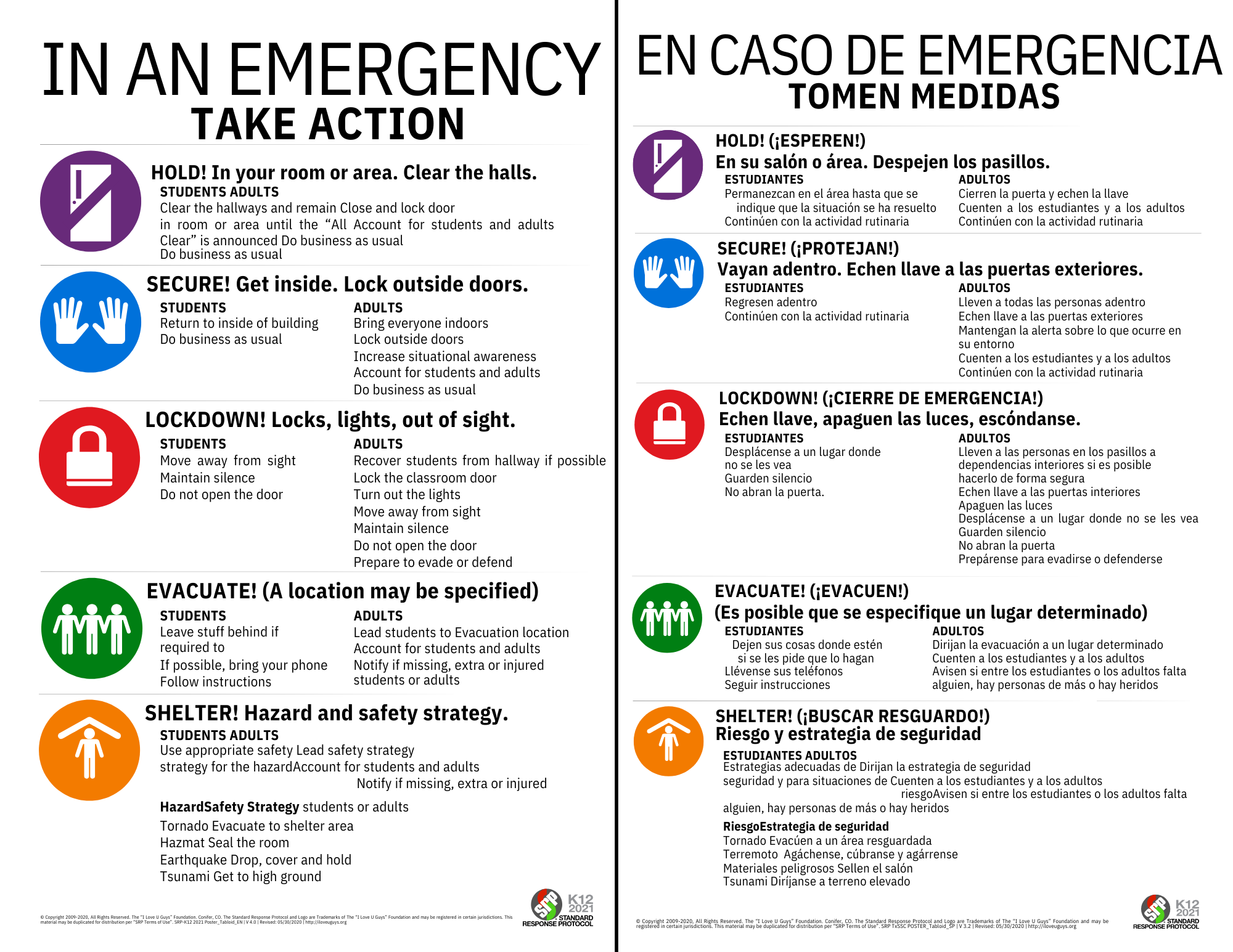
Why We Complete Drills
The more we drill and practice how to respond to an event, the better prepared we will be in an actual emergency. Drills create muscle memory, which can be life saving in a crisis situation by allowing people to react quickly and rely on their training, and not have to think about what to do. Drilling also allows us to see what works well and how to make plans even more effective.There are five drill events to ensure the safety of all students and staff in an emergency
“Training, drilling, and exercising are key features of a comprehensive emergency management program and facilitate the establishment of a culture of preparedness. Preparedness builds the capability to respond effectively and recover from emergency incidents. Regular training, drilling, and exercising using pre-determined and appropriate protocols will reduce the possibility that students and staff become victims in an emergency and ensure that responses are well executed.” — Texas School Safety Center
Mientras más nos entrenemos y practiquemos cómo responder a un incidente, tanto mejor preparados estaremos en una emergencia real. Los simulacros crean memoria motriz que puede salvar vidas durante una situación crítica al permitirles a las personas reaccionar rápidamente, confiar en su entrenamiento y no tener que pensar en qué hacer. Los simulacros también nos permiten ver qué funciona bien y cómo hacer planes incluso más eficientes. Hay cinco estrategias que se deben practicar para garantizar la seguridad de todos los estudiantes y el personal durante una emergencia:
"Entrenar, practicar y hacer ejercicios son características clave de un programa comprehensivo para el manejo de emergencias y facilita la formación de una cultura de preparación. La preparación desarrolla la capacidad de responder eficientemente y de recuperarse en situaciones de emergencia. El entrenamiento, la práctica y el ejercicio regular utilizando protocolos predeterminados y apropiados reducirán la posibilidad de que los estudiantes y el personal se conviertan en víctimas durante una emergencia y garantizarán que las respuestas se ejecuten bien". — Centro de Seguridad Escolar de Texas
Parents
Nacogdoches ISD is committed to the safety and security of all students, staff, and visitors. A District-Wide Emergency Operations Plan (EOP) is in place and reviewed annually. Campuses conduct various emergency drills such as fire, severe weather, and intruder drills throughout the school year to prepare students and staff for an emergency. All campus employees and administrators have received Critical Incident Training that is updated yearly. Every campus at Nacogdoches ISD is required to update their individual Campus Emergency Operations Plans. These plans are confidential for the safety of our students and staff. These plans are reviewed annually by the Safety, Student Management, and Campus Operations Department and the Campus Administration. In the event of a serious incident or threat, our first priority is to ensure our students and staff are safe; followed by informing/communicating with parents or media. However, we will share information we have available as we are able via email, parent calls or text messages, district social media, and the website.
Although many security procedures are confidential to ensure the safety of our students and staff, we can share a few proactive measures that are currently in place or being updated.
Secured vestibules at the entrance of all campuses
Additional/upgraded security cameras
Impact Resistant window film on glass
Daily door audits
One of the most important safety measures we as a District and community can take is being vigilant and reporting any suspicious behaviors or issues of potential concern. We encourage the reporting of suspected dangers to our Nacogdoches ISD Police Department at 936-569-5787.
What is a safety and security audit and why do we do them?
“The Audit process developed by the Texas School Safety Center was designed as a self-assessment of a district’s safety and security. Audits are an ongoing process with the aim of identifying hazards, threats, and vulnerabilities that may pose a danger to life or property or may interfere with a safe, secure, and healthy environment that is conducive to teaching and learning.” - Texas School Safety Center
What to do in a school emergency?
Watch your cell phone! NISD will send an alert to the cell phone we have listed on file if an emergency were to occur.
Go to the internet! Information will be posted on the Nacogdoches ISD website.
Do NOT go to the scene until you are instructed to do so.
You can be ass d that accurate and timely information will be released to parents, the public, and all local media outlets by District officials. We ask that you please wait to receive important information from NISD before arriving at a school or the scene of an emergency.
How will I be able to locate my child in an emergency?
If NISD determines that students and staff would be safer at another location due to an emergency, the campus will be evacuated. The District has identified alternative locations to be used in these events and will notify you of a specific pickup location for Reunification.
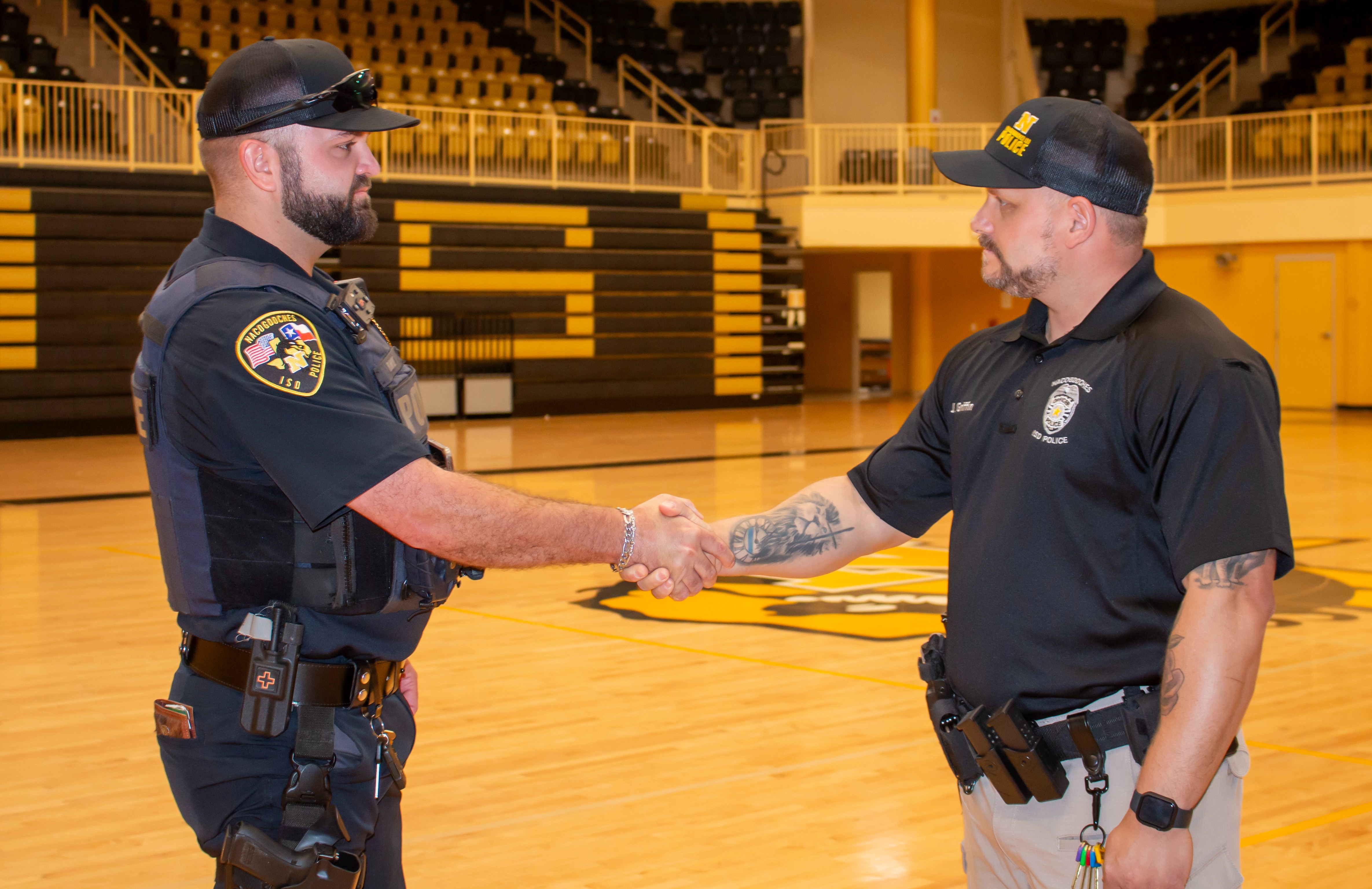
Reunification
Circumstances may occur at the school that requires parents to pick up their students in a formalized, controlled release. This process is called a Reunification and may be necessary due to weather, a power outage, hazmat, or if a crisis occurs at the school. The Standard Reunification Method is a protocol that makes this process more predictable and less chaotic for all involved.
Because a reunification is not a typical end-of-school day event, a reunification may occur at a different location than the school a student attends. If this location is another school, then those students may be subject to a controlled release as well.
Notification
Families will be notified by text and email if there is a need for reunification. The district uses an emergency broadcast system connected to the contact information families share during registration. Families may log in to the parent portal and search for “My Messages” to verify that their contact information and message preferences are up to date.
Parent/Guardian Expectations
If a parent or guardian is notified that reunification is needed, there are some expectations that parents or guardians should be aware of. First, bring identification. That will streamline things during reunification. Second, be patient. Reunification is a process that protects both the safety of the student and provides for an accountable change of custody from the school to a recognized custodial parent or guardian.
What If a Parent Cannot Pick-Up Their Student?
When a parent can’t immediately go to the reunification site, students will only be released to individuals previously identified as a student’s emergency contact. Otherwise, the school will hold students until parents can pick up their student.
What If the Student Drove to School?
There may be instances where a student may not be allowed to remove a vehicle from the parking lot. In this case, parents are advised to recover the student. In some circumstances, high school students may be released on their own.
How It Works
For students, the school asks that students be orderly and quiet while waiting. Students may be asked to text a message to their parents or guardians. Students are also asked not to send other text messages either in or out of the school or reunification area. Keeping cellular network usage at a minimum may be important during reunification.
Reunification Cards
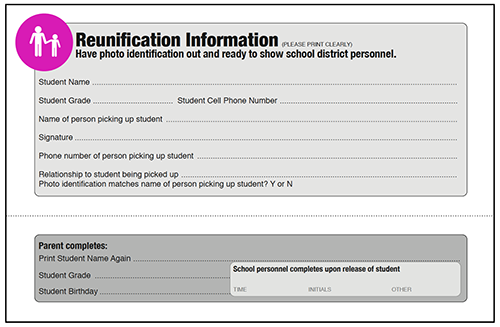
For parents, there are a couple of steps. If a parent is driving to the school, greater awareness of traffic and emergency vehicles is advised. Parents should park where indicated and not abandon vehicles. Parents are asked to go to the Reunification “Check In” area and form lines based on the first letter of their student’s last name. While in line, parents are asked to fill out a reunification card. This card is perforated and will be separated during the process. Some of the same information is repeated on both the top and separated bottom of the card. Parents are asked to complete all parts of the card. In the case of multiple students being reunified, a separate card for each student needs to be completed.
Bring ID To Check In
During check-in, identification and custody rights are confirmed. The card is separated and the bottom half is given back to the parent. From the “Check In” area parents are directed to the “Reunification” area. There, a runner will take the bottom half of the card and take it to the Student Assembly Area to recover the student or students. Parents should be aware that in some cases, they may be invited into the building for further information.
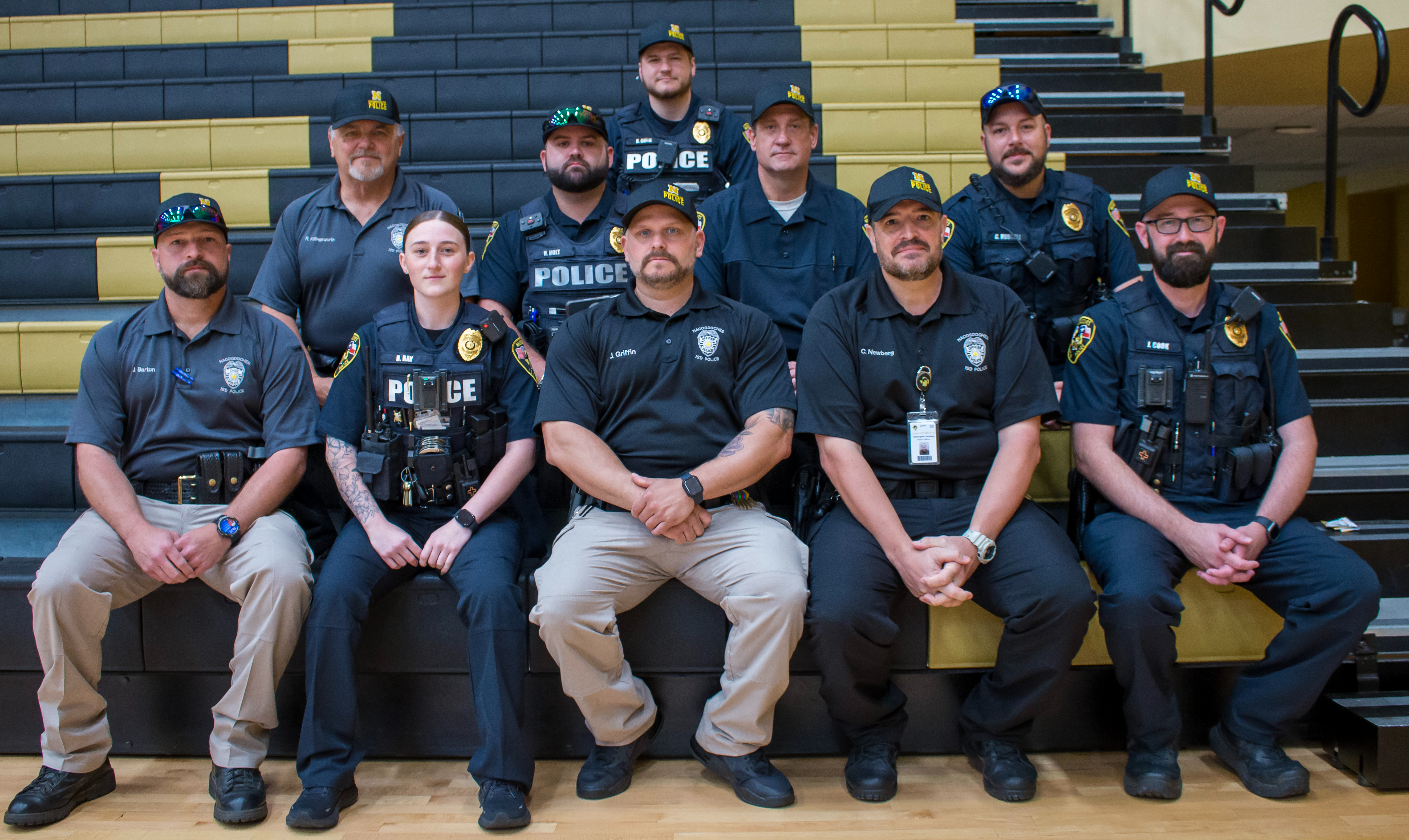
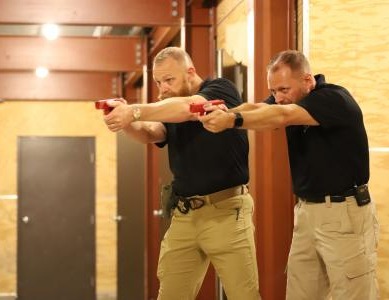
Active Shooter Training
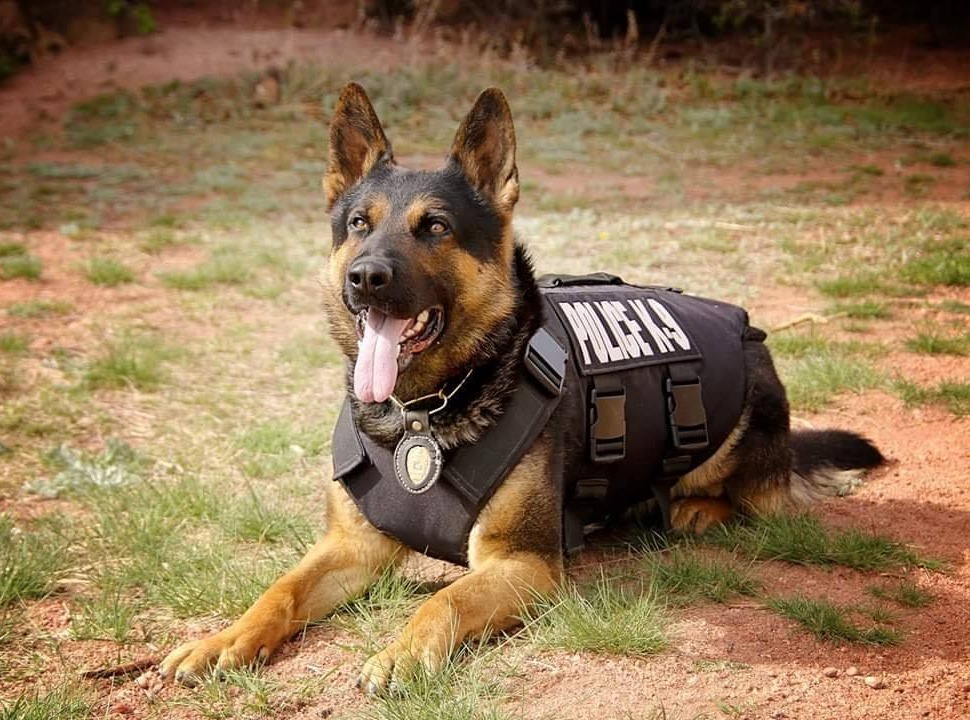
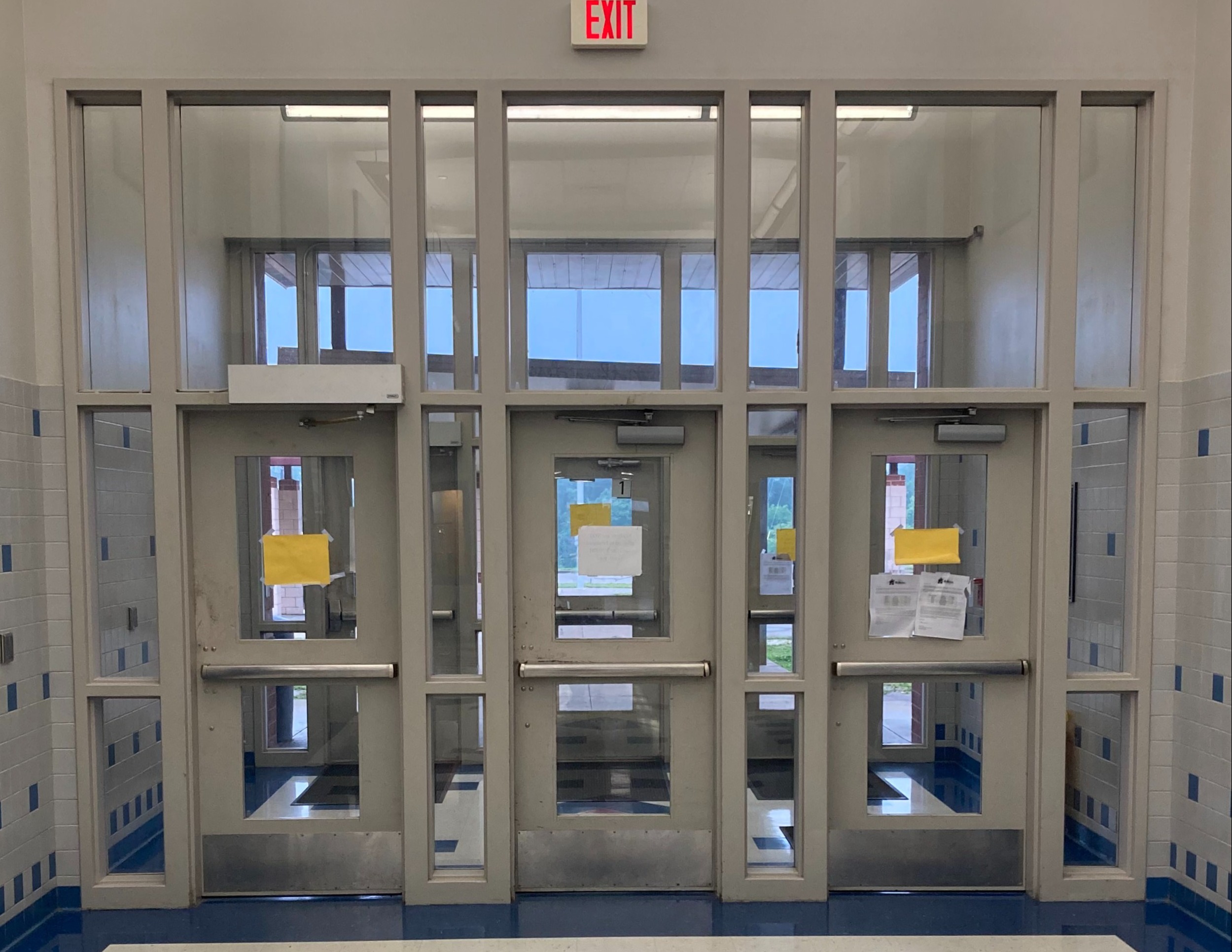
All of our police officers have completed the Active Shooter Response for School-Based Law Enforcement class, including training beyond the Advanced Law Enforcement Rapid Response Training Center (ALERRT) program as a part of our current safety and security standards and additional training well beyond current requirements and safety security standards.
Staff and substitutes are trained annually on specific district and campus safety procedures, including active shooter training, and mandatory drills are scheduled before the start of the school year. Each campus has a school behavioral threat assessment team that is trained and has reviewed procedures for that campus.
K-9 Program
We are in the process of starting our K-9 Program, more details to come.
Single Point Entrances with Vestibules
Security planning and implementation is critical to keep students and staff safe in our facilities. All of our campuses have single points of entry ensuring increased safety measures for students and staff.
The concept of a security vestibule is that visitors enter the vestibule.
Next, they are required to enter the office to check in before gaining access to the rest of the building.
The set of doors between the vestibule and the school remain locked and only open out.
In addition to the added security of knowing who is visiting the school, a security vestibule also serves as a single point of entrance for students who are late to school or coming from an appointment, because all other doors to the school remain locked while school is in session.
